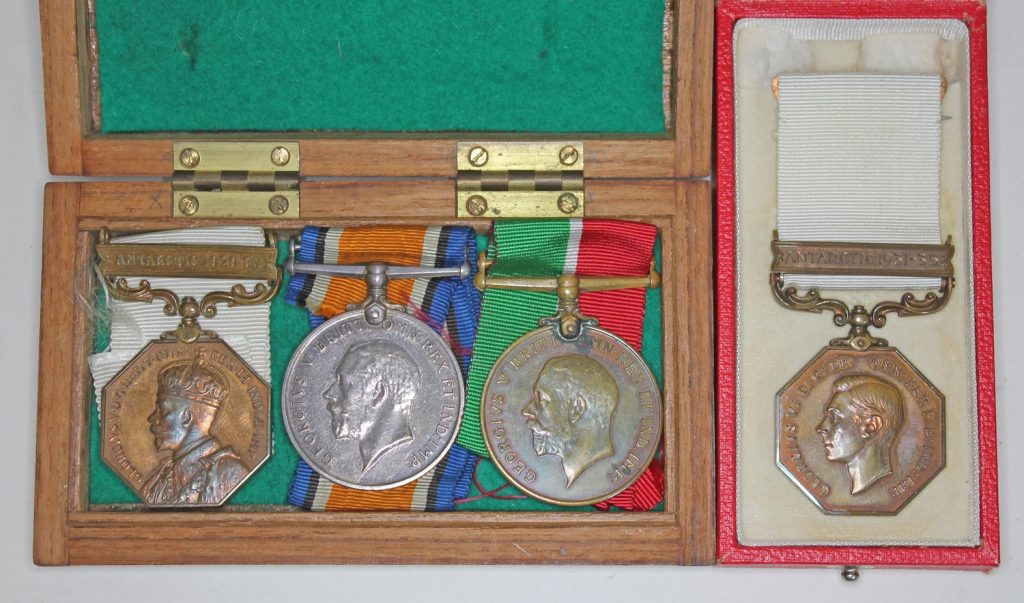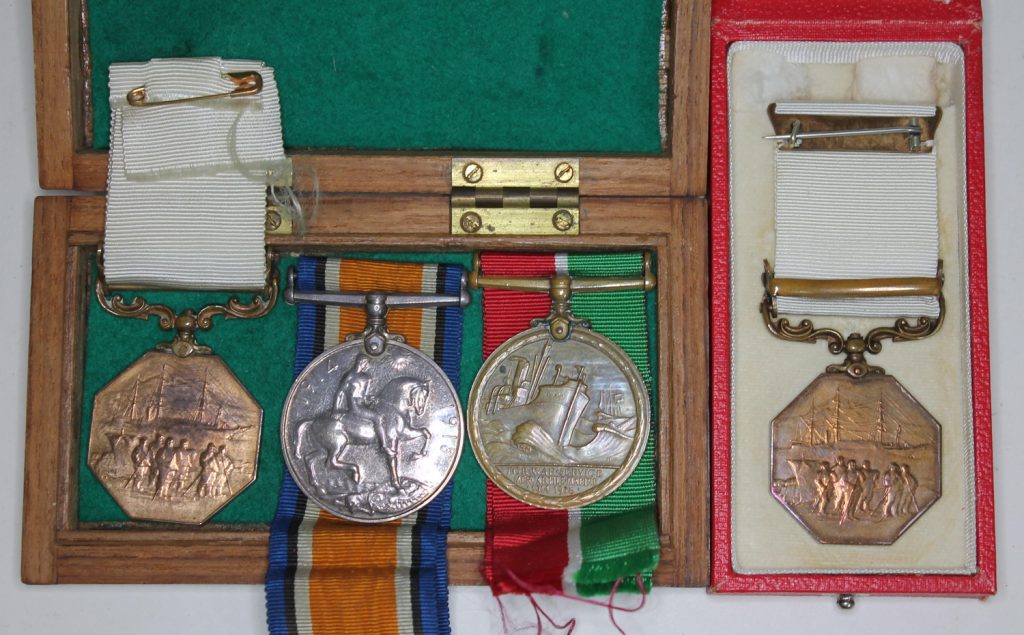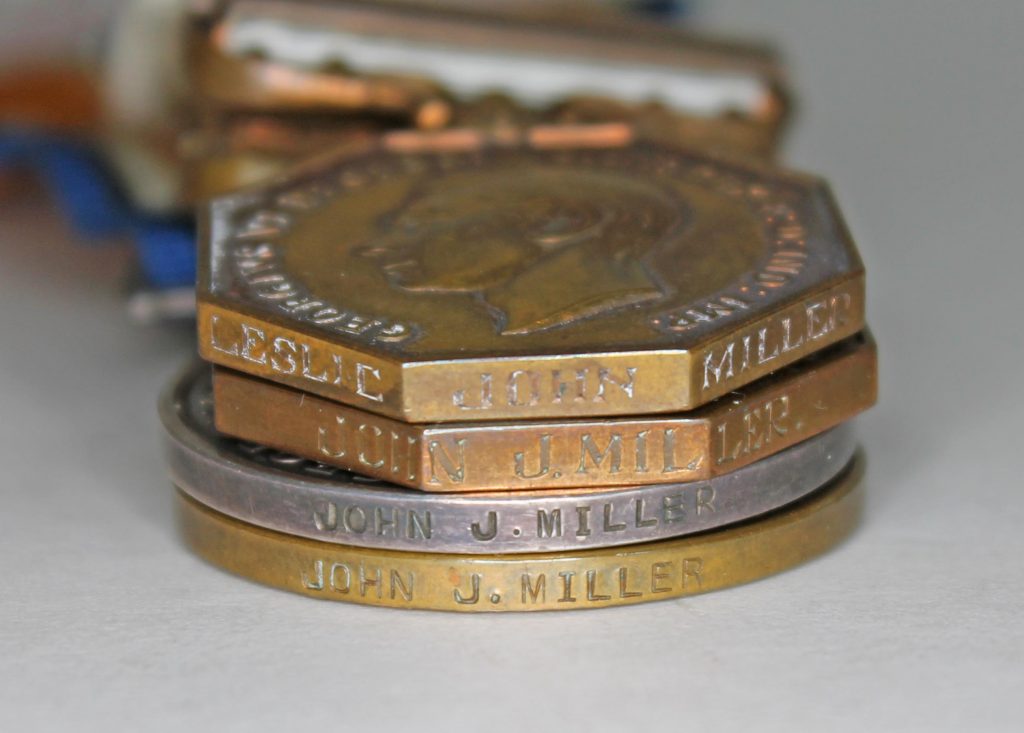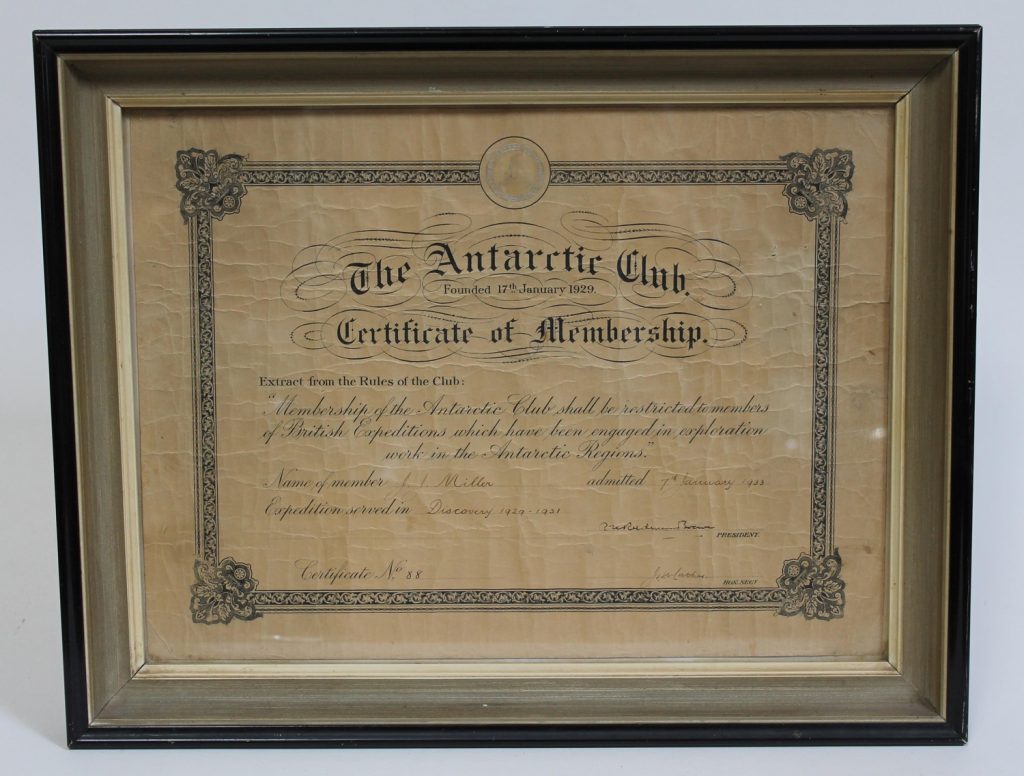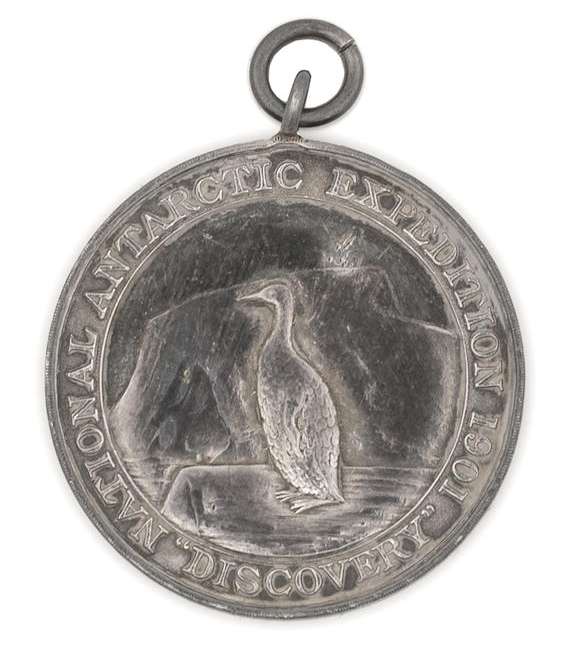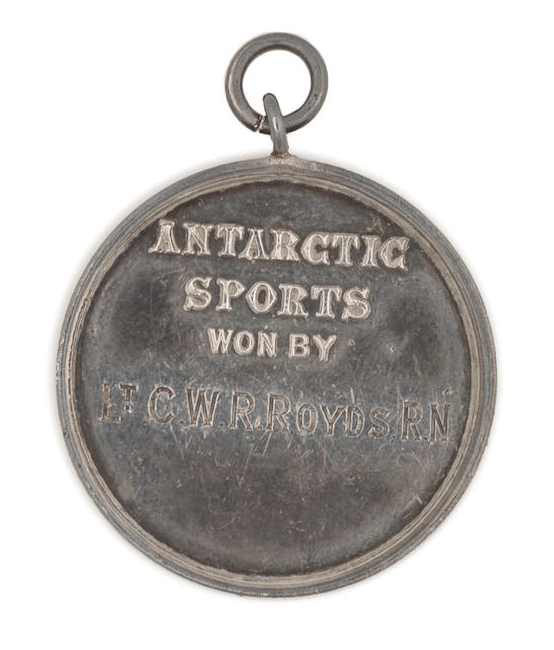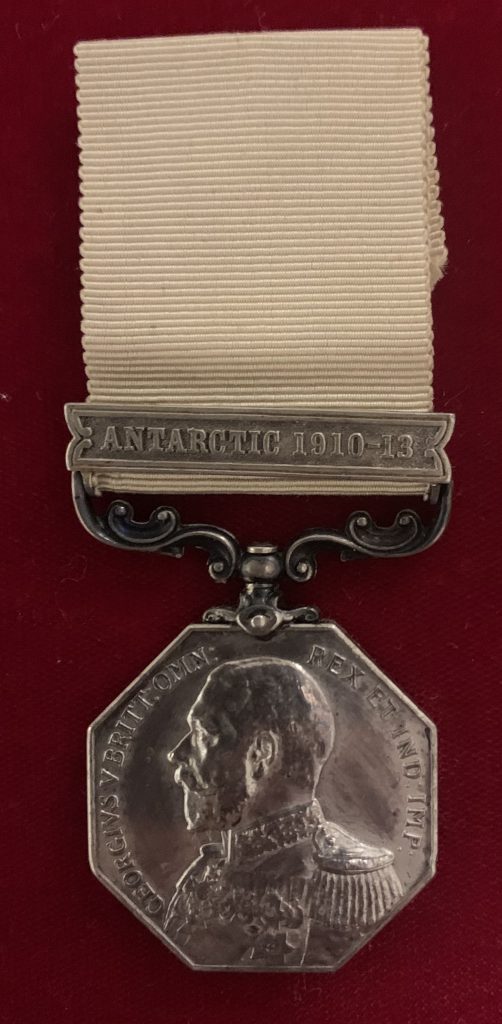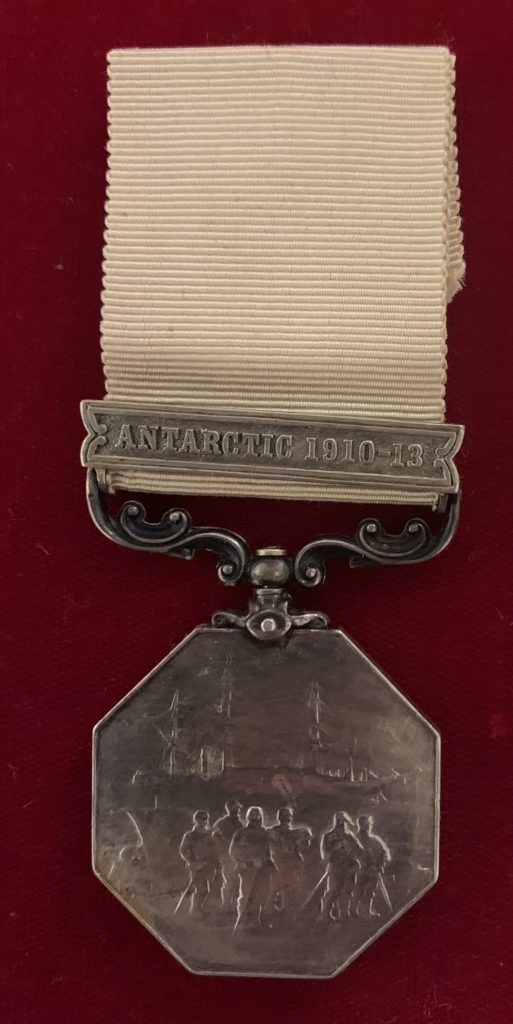Polar Memorabilia
1901-1904 – SCOTT´S FIRST EXPEDITION – Discovery Expedition
The Bronze Polar Medal without bar was awarded to five members of the Discovery who did not fulfil the above condition for silver medal and to the crews of the ships Morning and Terra Nova.
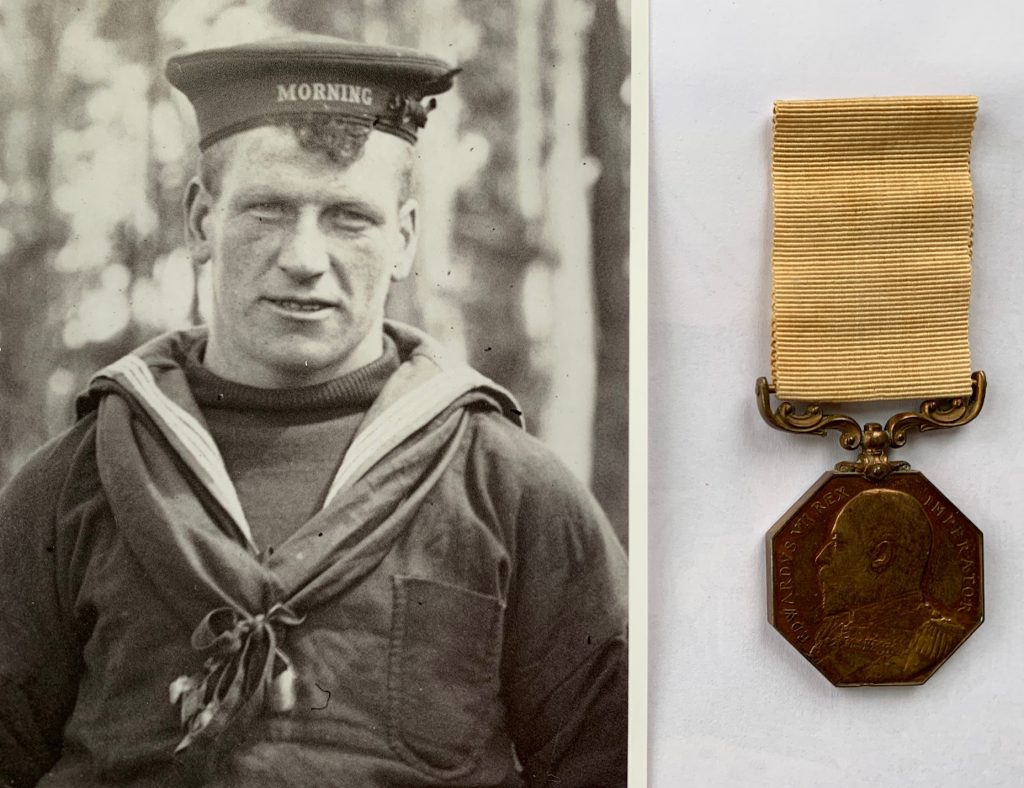
This Bronze Polar Medal for O. Riley. He was a crew memberon the ship Morning for both of her voyages to the Antarctic and he was also featured in the book “The voyages of the Morning” with an image which is attached.
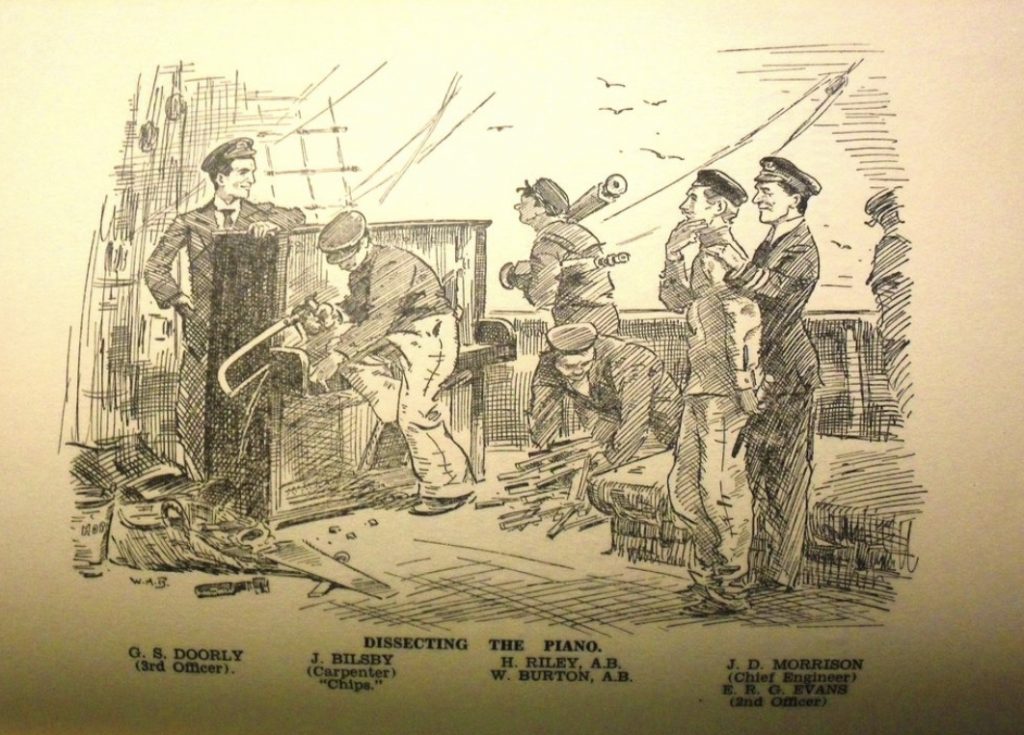
O. Riley is the man standing in the middle carrying parts of the piano! The piano was presented to the ship before she left and was then cut up by the crew and re-assembled below decks. The men then gathered around the piano every night. A book named “Songs of the Morning” was then later published too!
1901-1904 – DISCOVERY EXPEDITION – CHARLES ROYDS MEDAL
The Antarctic Sporting Medals were given to serving officers on the Discovery Expedition as prizes for their sporting achievements, ranging from sledge-pulling to rifle shooting and skiing. The medals, struck in advance of the expedition, were devised as a way to keep morale high, with sporting events arranged to alleviate boredom during the long winters.
Avers: A silver sporting medal awarded to First Lieutenant Charles W.R. Royds, the obverse with expedition emblem of a penguin on an ice-floe, an iceberg behind surrounded by the raised legend “DISCOVERY” NATIONAL ANTARCTIC EXPEDITION 1901
Revers: The reverse with raised legend “ANTARCTIC/ SPORTS/ WON BY” engraved beneath LT. C.W.R. ROYDS, R.N.
1910-1913 – Scott´s Last Expedition
The Terra Nova Expedition, officially the British Antarctic Expedition
THE WHITE RIBBON – Silver Medal
The medal with bar “ANTARCTIC 1910-13” was awarded in silver to shore party and those members of the Terra Nova who made more than one voyage. Steward W.H. Neale was the owner of this medal, he was a member of Ship’s Party of the Terra Nova. He was a well-known member of the crew. He is mentioned in the diary of Captain Scott and also in “The Worst Journey in the World” by Cherry-Garrard and “South with Scott” by Rear Admiral Evans.
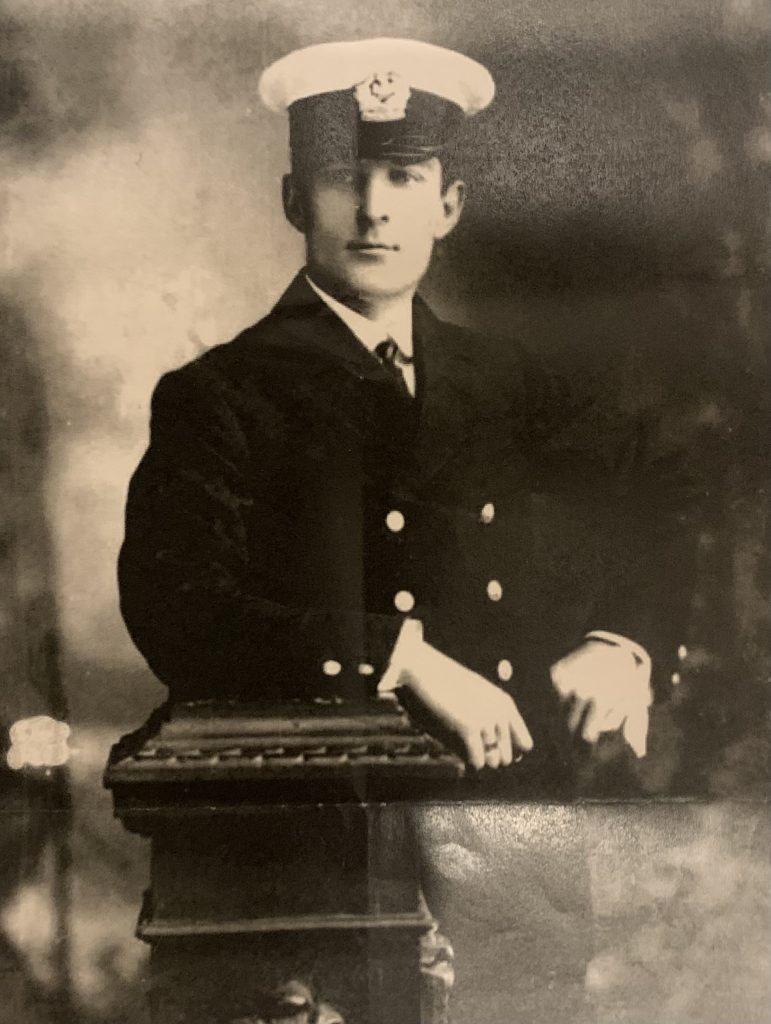
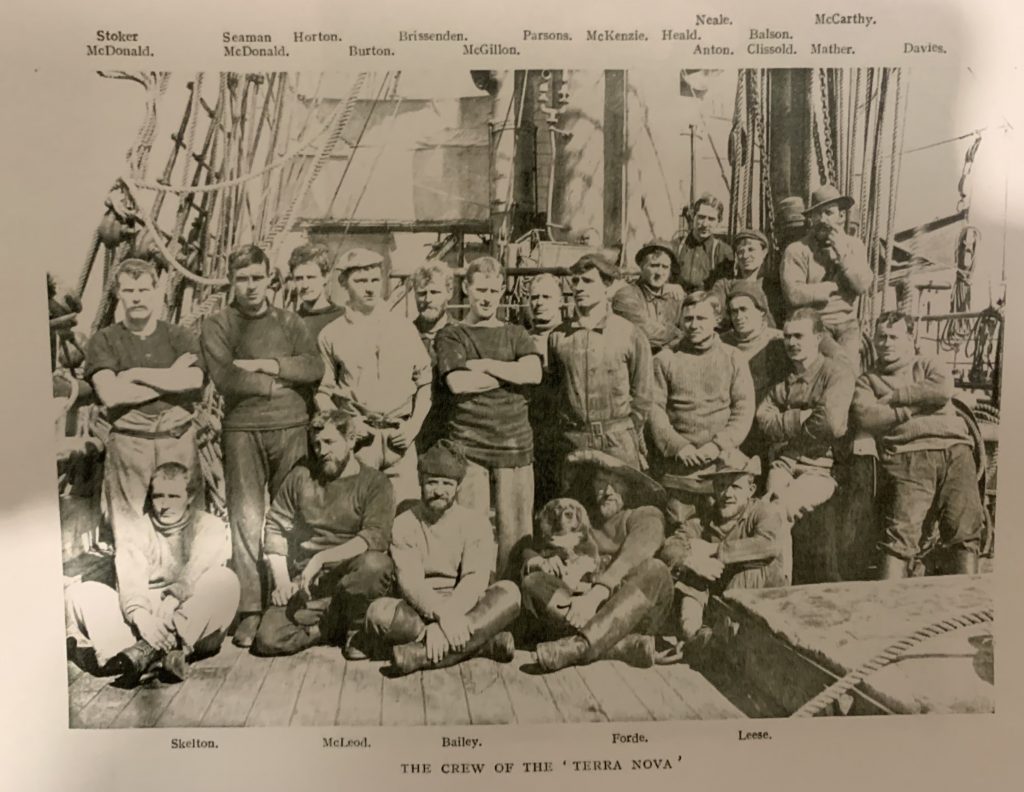
B.A.N.Z.A.R.E. 1929-1930 expedition rare Bronze Polar Medal
Medal awarded to Assistant Steward C. H. V. Sellwood, late Petty Officer, Royal Navy – he served on the B.A.N.Z.A.R.E. expedition alongside greats of the ‘Golden Age’ including Hurley and Mawson, the former who famously recorded Shackleton’s ill-fated Endurance expedition, the latter a fêted veteran who commanded the Discovery II into “The Great White South“
Polar Medal 1904, G.V.R., 2nd ´Crowned Head´ type, 1 clasp, Antarctic 1929-31, bronze issue (C. H. Sellwood), impressed naming, mounted upon pin as originally worn with silk riband.
Note: Sellwood’s original Polar Medal was incorrectly named ‘Selwood’ by the Royal Mint as per the London Gazette entry; thus that was returned and this Medal issued, evidently bearing the clasp ‘Antarctic 1929-31’. It is clear that this Medal is that one worn by the recipient.
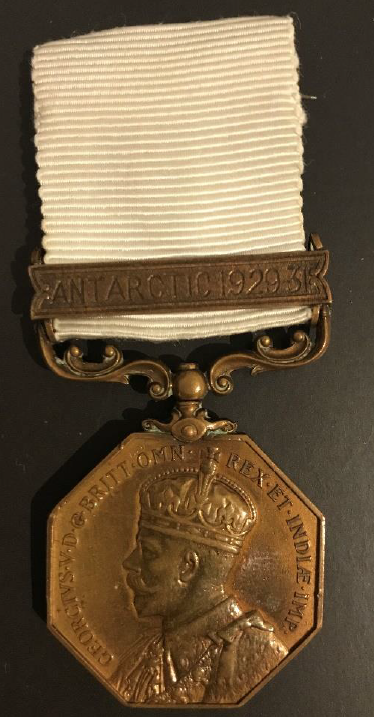
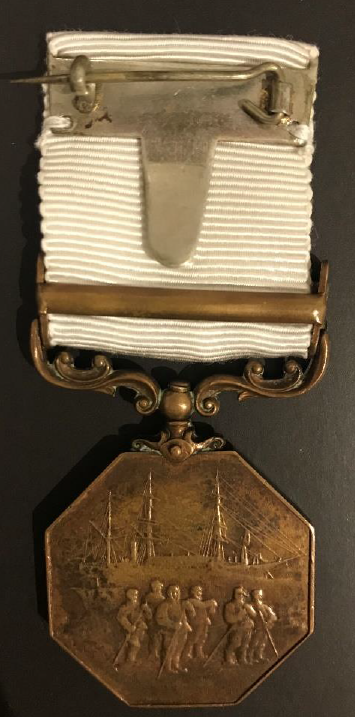
One of just 14 bronze awards for ‘Antarctic 1929-30′, all of which were announced in the London Gazette on 1 May 1934;
Sailing from Cape Town under the command of Sir Douglas Mawson on 19 October 1929, the voyage set to explore, map and hope to claim over 2,500 miles of uncharted land between Kaiser Wilhelm II Land and Coats Land. Sighting icebergs on 7 December, they entered the pack-ice and proceeded to latitude 65 deg. 41’ S on 16 December. With the ice impassable, they proceeded west – sighting and confirming a number of islands and landing upon Proclamation Island in early January 1930. Discovery II continued on and charted the Scott Mountain range and much more before turning back on account of a lack of coal on 26 January, refuelling at the Kerguelen Islands before reaching port in Australia on 31 March 1930.
Like the Australasian Antarctic Expedition before it, B.A.N.Z.A.R.E. was also a great scientific success, producing an enormous amount of data about the Southern Ocean to build on the Challenger expedition over half a century before. By the close of the expedition, Mawson had claimed for Britain all the land of East Antarctica between longitude 40 deg. E and 160 deg, some 42% of the entire continent. That claim would be transferred to Australia in 1935.
Clarence H. V. Selwood [sic]
Clarence Henry Victor Sellwood was born at Bradfield, Berkshire in 17 March 1906. He enlisted in the Royal Navy on 22 October 1923 as a Boy Servant aged 17. Having been advanced Officer’s Steward 4th Class in March 1924 and Officer’s Steward 3rd Class in September 1926, he joined H.M.S. Benbow in May 1928. His stay would however be short, for Sellwood was charged for maliciously wounding and the attempted murder of his girlfriend with a razor blade whilst ‘blind drunk’ on 14 November 1928. It should be noted he had immediately taken her home, bathed and dressed her wounds before handing himself to the authorities. He was jailed for 7 months on 18 January 1929.
Having completed his time at His Majesties Pleasure, he immediately sought redemption and joined the crew of Discovery II at the rate of Assistant Steward during the first British, Australian and New Zealand Antarctic Research Expedition.
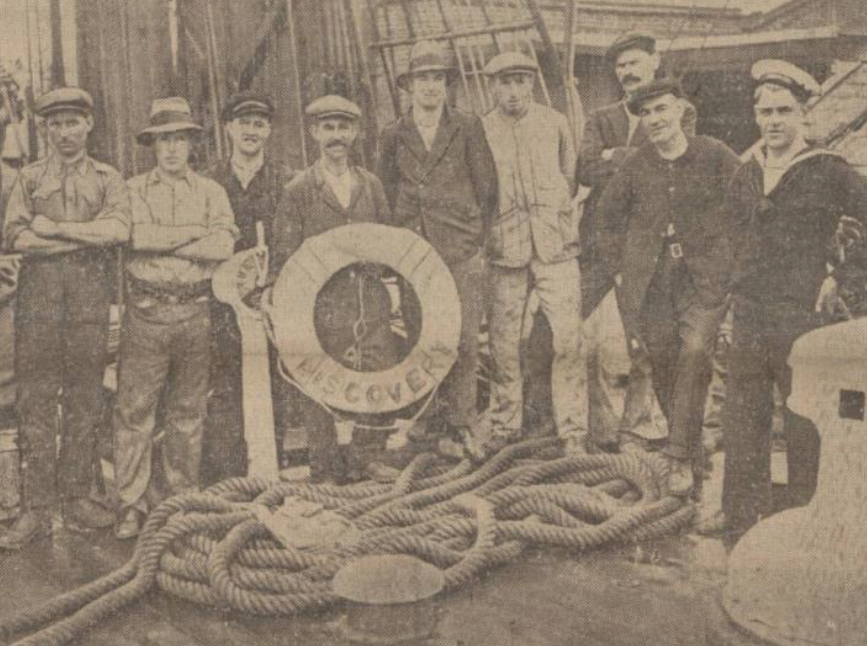
Having spent the season in the Antarctic Sellwood joined the Merchant Navy on 17 July 1930. He rejoined the Royal Navy and as quoted in British Polar Exploration and Research by Poulsom & Myres:
‘…during World War II served in one of the ships which was sunk by the Graf Spee. In 1947 he emmigrated to Australia where he is thought to have died in a great flood and earthquake.’
Mount Sellwood, standing at 944m, is located 5 nautical miles northeast of Pythagoras Peak, in the Tula Mountains of Enderby Land. It was is named in Sellwood’s memory by the Antarctic Names Committee of Australia in 1956.
Polar Group of four Medals from John Joseph Miller and Leslie John Miller
Father and Son Polar Medal Group, John Joseph Miller and Leslie John Miller, both serving on the RRS Discovery / Discovery II.
Four medals: Comprising George V First World War and later trio: Polar Medal with Antarctic 1929-31 bar, British War Medal and Mercantile Marine War Medal, all inscribed “JOHN J. MILLER”, and George VI Polar Medal with Antarctic 1931-35 bar inscribed “LESLIE JOHN MILLER”.
What is believed to be the only father and son Polar Medal group to be awarded.
John served on the RRS Discovery in 1929 with Douglas Mawson – the same ship which took Scott on his first voyage to the Antarctic in 1901. When the vessel returned from Mawson’s expedition and was moored on the Embankment in London, John was made caretaker. In 1986 Discovery returned to Dundee, where she was built, and is now open to the public.
His son Leslie was on the second Discovery, which set off in 1931 and spent four years in the Antarctic.
Enclosed John Joseph Miller’s membership certificate for the Antarctic Club.
